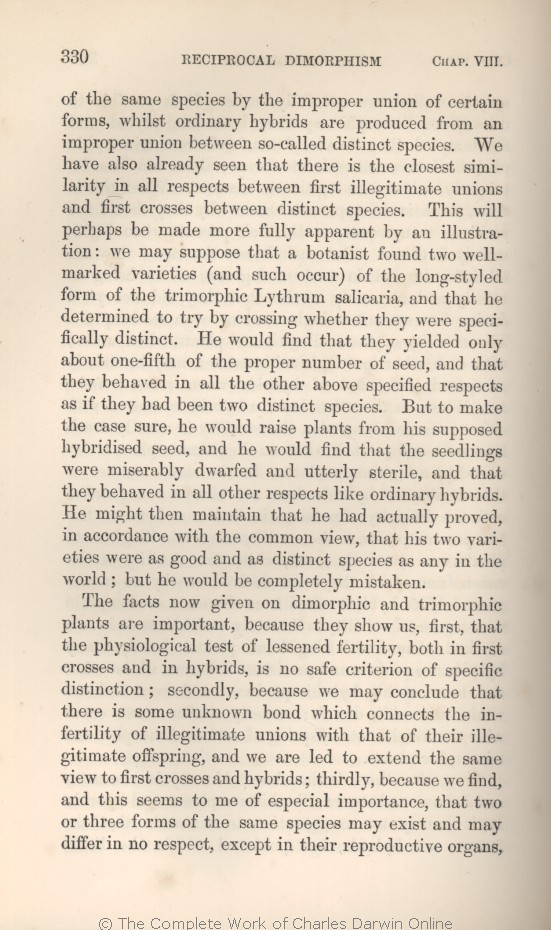of the same species by the improper union of certain forms, whilst ordinary hybrids are produced from an improper union
between, | between, 1869 | | between 1866 1872 |
| illustration: 1866 1869 | | illustration; 1872 |
|
|
The facts now given on dimorphic and trimorphic plants are
..
important, | important, 1869 1872 | | importance, 1866 |
| first, 1869 1872 | | firstly, 1866 |
| may conclude 1869 1872 |
| are thus led to infer, as previously remarked, 1866 |
| bond which 1869 1872 |
| law or bond 1866 |
| connects 1869 1872 | | connecting 1866 |
| with that 1869 1872 |
| and of first crosses, with the infertility 1866 |
| offspring, and we are led to extend the same view to first crosses and hybrids; 1869 1872 |
| and hybrid offspring; 1866 |
| importance, 1869 1872 | | portance, 1866 |
| respect, 1866 1869 | | respect 1872 |
| except 1866 1869 |
| whatever, either in structure or in constitution, relatively to external conditions, and yet be sterile when united 1872 |
|









